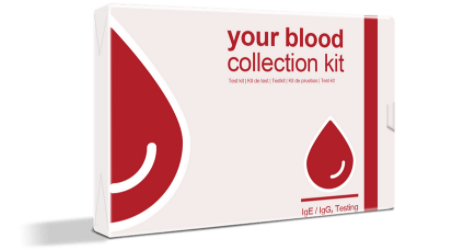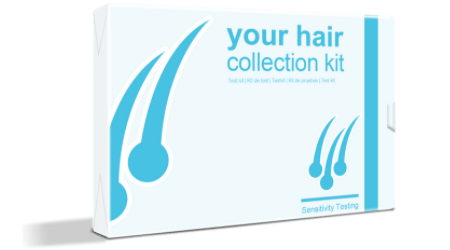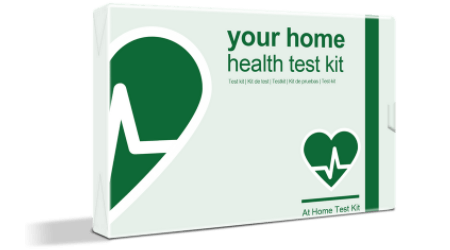Allergy & Intolerance to Gluten and Wheat
What is wheat?
Wheat is a popular grain farmed throughout the world for use in various foods such as bread, pasta and many types of baked goods. It has been a staple of cultures’ diets for several thousand years, although most grains have been bred and modified over this time to improve yield and therefore differ from those our ancestors may have consumed.
What is gluten?
Gluten is a protein found in certain grains such as wheat, barley and rye. Those who have a gluten intolerance should avoid all three of these grains and any other foods which may also contain trace levels of gluten.
What does an allergy or intolerance to Gluten or Wheat mean?
It is a common assumption that wheat is thought of as the primary grain to which people have an allergy or intolerance. Non-coeliac gluten sensitivity has become better understood in recent years, and we’re just beginning to determine how widespread it really is [1, 2].
Although Wheat is often the cause of a food allergy or intolerance, there are other grains that can cause an allergy or intolerance, including Barley and the lesser-known component Gluten. Furthermore, Rice and Oats can also cause your body to react, and all of these items are accountable for various individual food allergies & intolerances throughout the UK.
What are the Symptoms?
Common symptoms of Wheat or Gluten intolerance include;
- Bloating
- weight gain
- fatigue
- skin problems (such as eczema, rashes or even acne)
- migraines
Common allergy symptoms of wheat or gluten include;
- Sneezing
- Itchy, red or watery eyes
- Swollen lips, tongue, eyes or face
- Stomach pain
- Vomiting
- Diarrhoea
- Wheezing, difficulty breathing or a tight chest
- Anaphylaxis (Anaphylactic shock)
It’s important to remember is that even a mild food allergy or intolerance to grains and staples may affect the way a person is able to live their life. Even more importantly, these foods are one of the most common inclusions in any person’s diet, meaning the offending food will be difficult to detect, and thus avoid. An allergy or intolerance can help in this regard, but you should always be careful when picking up produce from the shops and read the ingredients carefully.
Foods to Avoid
Foods containing gluten or wheat include;
- Pasta
- Baked Goods
- Cake
- Biscuits
- Pastries
- Wheat, barley or rye Bread
- Couscous
- Brewer’s yeast
- Beer
- Vinegar
- Breaded foods
- Durum
- Kamut
- Many pre-packaged foods, tins and sauces
Wheat and gluten-free alternatives
- Quinoa
- Gluten-Free Oats (Oats don’t usually contain gluten, but may be processed in an environment with gluten, so the potential for cross-contamination should be considered)
- Potatoes
- Rice
- Corn
- Fresh Vegetables
Test for food allergies & intolerances to wheat and gluten
Testing for intolerances to wheat and gluten
Testing for wheat or gluten food intolerance can be conducted through a simple home-to-lab blood sample test. A small blood sample can conveniently be taken at home and then sent to a lab for analysis. These tests analyse the blood’s IgG (Immunoglobin G) levels for intolerance to various food items and use standardised benchmarks to make these measurements [3].
Testing for allergies to wheat and gluten
An allergy test can be conducted using the same blood sample but looking for a different strand of immunoglobin (IgE). This sample can also be taken at home and sent to a lab for testing, with results then sent back to you, highlighting any potential allergies.
At Test Your Intolerance, our expert team have devised a scientifically validated food allergy & intolerance blood testing kit, highlighting what foods your body is intolerant to, including wheat or gluten. Examining hundreds of food and non-food items, the team aim to provide you with all the results you need. This can be completed easily at home by sending us a sample of your blood in the post.
We also offer sensitivity testing which allows us to assess your sensitivities against up to 979 items using just a few strands of hair.
What do we offer?
The full Test Your Intolerance process offers:
- Scientifically validated blood testing
- Bioresonance hair sensitivity testing
- Comprehensive Reports sent via email and to our app
- Access to nutritional therapy aftercare
Instant Results Access through Email
At Test Your Intolerance, we know you want to know what you are allergic or intolerant to as soon as possible, as you are most likely looking to alter your diet and cut out offending foods. Therefore, we provide you with access to your results as soon as they are tested and have been verified.
Once approved, you will have secure online access to them having received an email from us. With a username and a password, you can log in and begin your journey to a new and healthier you, as you eliminate offending foods from your diet. Take a look at your results and read your in-depth report on your allergies & intolerances. Alternatively, results are also available through our exclusive app.
A full report sent by email and to the app
Enabling the convenience of being able to see your results online immediately, we also send you a comprehensive report, outlining all the foods that you are allergic or intolerant to. These tests help you to take control of your body, and this can set you on your way to managing your own food allergies & intolerances.
Problem food
Food intolerances and food allergies are on the rise across the country. With symptoms ranging from subtle (bloating & fatigue) to the extreme (difficulty breathing & diarrhoea) finding your food sensitivities is more important than it ever was.
Fortunately, with Test Your Intolerance, it’s also easier than it ever was. Using our scientifically validated blood tests or bioresonance hair tests, you can get a more complete understanding of your body and the way different foods affect it.
To find out more about specific food items, click the images below.
References
[1] Barbaro, M.R., Cremon, C., Stanghellini, V. and Barbara, G. (2018). Recent advances in understanding non-celiac gluten sensitivity. F1000Research, [online] 7, p.1631. Available at: https://www.ncbi.nlm.nih.gov/pmc/articles/PMC6182669/ [Accessed 27 Feb. 2020].
[2] Igbinedion, S.O., Ansari, J., Vasikaran, A., Gavins, F.N., Jordan, P., Boktor, M. and Alexander, J.S. (2017). Non-celiac gluten sensitivity: All wheat attack is not celiac. World Journal of Gastroenterology, [online] 23(40), pp.7201–7210. Available at: https://www.ncbi.nlm.nih.gov/pmc/articles/PMC5677194/ [Accessed 27 Feb. 2020].
[3] Lin, S., Yang, X., Xing, Y., Wang, X. and Li, Y. (2019). The Clinical Application Value of Multiple Combination Food Intolerance Testing. Iranian journal of public health, [online] 48(6), pp.1068–1073. Available at: https://www.ncbi.nlm.nih.gov/pubmed/31341848 [Accessed 28 Feb. 2020].


